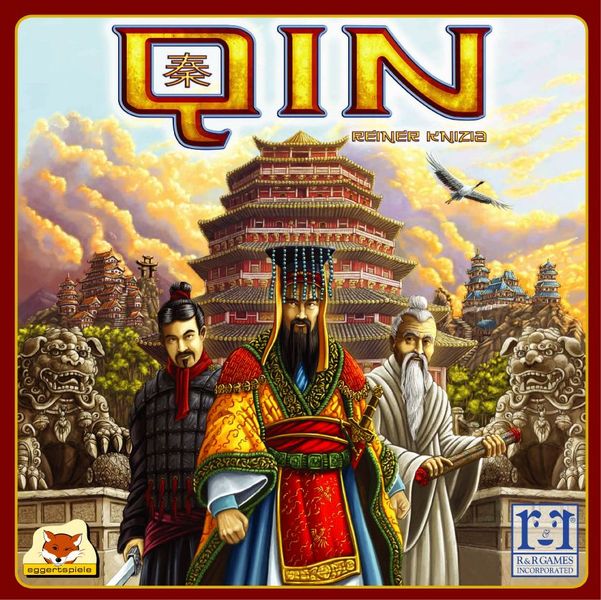Qin (2012) Board Game
Qin is an abstract strategy board game that was released in in 2012. It is designed by Dennis Lohausen and published by eggertspiele. The game is set in ancient China and revolves around territory building and hand management mechanics. With a runtime of 30 minutes and suitable for players aged 8 and above, Qin can accommodate 2-4 players, with the best player count being 3.
Game Components of Qin
How To Setup Qin
Setting up Qin is quick and straightforward, taking only 1-5 minutes. Players start by placing the board, which features a grid of grassland spaces and villages. Each player receives a set of pagodas in their assigned color. The tiles, which are the main game pieces, are shuffled and placed within reach of all players.
Gameplay Mechanics and Game Objective
Player Experience
Qin offers a strategic and visually engaging experience, requiring players to think ahead and manage their territory effectively. The game is relatively short, lasting between 30-45 minutes, making it a great fit for those looking for a concise yet challenging game session. The low chance element ensures that strategy and area visualization skills are key to success.
Pros
Cons
Personal Thoughts on Qin
Qin is ideal for fans of abstract strategy games and tile-laying mechanics, similar to games like Carcassonne or Tigris & Euphrates. It is particularly suited for players who enjoy strategic planning and visualizing territory expansion. While it may not offer the same level of direct player interaction as other games, its focus on strategic placement and area control makes it a compelling choice for those who enjoy a more cerebral gaming experience.
We are supported by our audience. When you purchase through links on our site, we may earn an affiliate commission, at no extra cost for you. Learn more.

